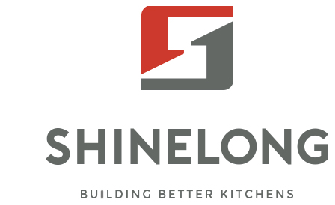News
Essential Cooking Equipment for High-Volume Restaurant Operations
Essential Commercial Cooking Equipment for High-Volume Operations
The kitchen of any busy restaurant simply wouldn't function without industrial ranges and griddles. These big machines are built tough enough to withstand years of constant use while handling everything from searing steaks to simmering sauces. Griddles stand out because they offer such large flat surfaces where cooks can work on several items at once, which saves precious minutes when orders start pouring in during lunch rush. Modern day ranges come equipped with features that make life easier for line cooks too - think about those adjustable burners that let someone fine tune heat levels exactly right, plus how fast these things heat up compared to older models. When a chef needs to plate something special quickly but still wants it cooked properly, having access to reliable equipment makes all the difference. That's why most professional kitchens invest heavily in good quality ranges and griddles despite their upfront cost.
For busy kitchens where speed matters just as much as taste, high capacity convection ovens have become essential equipment. They spread heat evenly across big batches of food, cutting down on how long things take to cook. Industry folks often mention that these ovens tend to save quite a bit of energy when compared to regular ovens, making them smart investments for restaurants watching their utility bills. What really counts though is how they keep food tasting great even during rush hours. When dishes come out consistently good despite the volume, customers notice and keep coming back. Most experienced chefs know that convection ovens aren't just kitchen gadgets they're game changers that help maintain quality standards without wasting precious resources.
Restaurant kitchens need tough commercial dishwashers that can handle constant use throughout long shifts. These big machines take care of massive amounts of plates, glasses, and cutlery while freeing up cooks to focus on food prep instead of scrubbing pots. Most modern units come with fast rinse settings that cut down wait times between orders, which makes all the difference when tables are turning over rapidly during lunch rushes or dinner peaks. Restaurants typically look for models meeting certain capacity requirements set by health departments, since proper cleaning isn't just about speed but also about keeping customers safe from contamination risks. A good dishwasher investment means faster table turnover without sacrificing cleanliness standards, something every restaurant owner knows is critical for staying profitable in competitive markets.
In busy commercial kitchens, heavy duty mixers and prep stations just cant be beat. These machines handle massive ingredient volumes while keeping their cool even during peak hours when everything seems to break down. The time saved by these appliances means chefs spend less time sweating over mixing bowls and more time actually cooking. Most kitchen pros will tell anyone who asks that matching mixer specs to what the restaurant actually needs matters a lot. A pizza place needs something totally different from a bakery churning out bread all day long. Restaurants that splurge on the right equipment see real improvements in how smoothly operations run, plus they can serve whatever menu items customers want without relying on outside help for specialty preparations.
Induction Cooktops: Energy-Efficient Cooking Solutions
Advantages of Induction Technology
Induction cooktops have really changed how we think about cooking today, especially when it comes to getting just the right amount of heat. Chefs love them because they can adjust temperatures so precisely, which means food turns out consistently good every time. For professional cooks working in restaurants, this kind of fine-tuned heat control makes all the difference between a dish that's perfect and one that falls flat. What's interesting is how efficient induction actually is compared to other methods. Around 90 percent of the energy goes straight into the pot or pan instead of being wasted somewhere else, which cuts down on electricity bills over time. Safety is another big plus point too. Since induction surfaces don't get hot themselves, there's much less heat floating around the kitchen area. This keeps things cooler for kitchen staff and dramatically lowers chances of someone getting burned accidentally while moving around during service hours.
Integrating Induction Cooktops in Large Kitchens
Induction cooktops bring benefits beyond just saving energy. They take up less room too, which is great news for big kitchens trying to get the most out of available space. The flat surface design leaves counters open for prep work when cooking, something that matters a lot in busy kitchens where space can be at a premium. Installing these cooktops usually doesn't require major changes to the kitchen layout either. Most homeowners find they fit right into existing setups without much hassle. Restaurants across the country have made the switch to induction cooking with impressive results. One steakhouse reported cutting down on energy bills while maintaining food quality standards. Another pizza place saw faster cooking times during peak hours. These real world applications prove that induction technology works well across different types of food service operations.
Maintenance Protocols for Restaurant Cooking Equipment
Routine Cleaning for Commercial Dishwashers
Keeping commercial dishwashers clean regularly helps avoid those frustrating clogs and slowdowns that nobody wants during busy service times. Most operators find they need to tackle basic maintenance tasks like removing food scraps stuck in filters, doing periodic descaling runs, and giving visible parts a good wipe down. Daily cleaning works for most setups, though places with heavy turnover might need to go through this process twice a day sometimes. The right kind of cleaning solutions make all the difference too - not just for keeping things sanitary but also protecting expensive equipment over time. Don't forget regular inspections either. A quick look inside combined with proper detergent specifically formulated for commercial machines goes a long way toward making sure everything keeps running smoothly month after month.
Preventative Maintenance for Induction Cookers
Getting regular checkups for induction cookers really matters because it catches small problems before they turn into big repair bills down the road. Keeping those cooktop surfaces clean is another must do thing, particularly making sure there's no leftover food stuck around after meals. A dirty surface just makes everything work harder than needed. The pros always talk about watching out for early trouble signals too. Things like when heat distribution starts acting weird or when strange error codes pop up on the display panel. Knowing what to look for saves headaches later on when trying to cook dinner without interruptions. Plus, maintaining good performance helps save electricity costs over time, which nobody complains about.
Deep Cleaning Industrial Ranges and Hoods
Keeping industrial ranges and hoods thoroughly cleaned isn't just good practice it's actually required by most health and safety regulations these days. When grease builds up over time, it creates serious problems beyond just looking messy. Grease accumulation increases the chance of fires, especially in commercial kitchens where heat sources are constantly running. Most equipment makers suggest their own preferred methods for getting rid of built up grime. Some swear by heavy duty degreasing agents while others push steam cleaning systems that cut through years of buildup without damaging surfaces. Restaurants that stick to regular deep cleaning schedules report fewer incidents with flare ups and generally find their staff feels safer working around properly maintained cooking equipment.
Safety Standards for Commercial Cooking Operations
Compliance with Health Department Regulations
Following health department rules isn't just something to check off the list but actually keeps commercial kitchens running safely and efficiently. The regulations typically require pretty strict hygiene measures like keeping everything clean on schedule, storing food correctly, and making sure equipment stays in good working order so nothing gets contaminated and customers stay safe. When restaurants ignore these rules, they face serious problems ranging from big fines to actual lawsuits plus putting people's health at risk. That kind of situation usually ends badly for everyone involved, hurting both reputation and bottom line. The CDC reports that millions get sick from bad food every year, which makes following those health standards even more critical. Kitchens that stick closely to these guidelines simply avoid most health issues altogether while building genuine trust with their regulars who appreciate knowing their meals are prepared under proper conditions.
Fire Safety for Induction Cooktops and Ranges
Fire safety for both induction cooktops and regular stoves needs some special attention because each appliance works differently. Induction cooktops are pretty efficient since they heat things up faster and more evenly, which actually lowers fire risks compared to older models. Still, operators need to watch out for electrical issues and make sure the surface stays clean so nothing gets stuck underneath causing problems. Traditional stoves require different treatment altogether. Restaurants busy with lots of cooking activity should install proper fire suppression equipment right from the start. These systems catch small flames before they get out of hand, something we've seen save countless kitchens over the years. Statistics from the NFPA show that kitchen fires remain one of the biggest causes of home fires, though better safety practices have definitely cut down on accidents. Getting serious about these safety steps isn't just about following rules it's about protecting everyone who works in or visits the kitchen space.
Energy Efficiency in High-Volume Restaurant Kitchens
Cost-Saving Benefits of Commercial-Grade Equipment
Restaurants that want to keep running smoothly when they're busy need good quality commercial equipment. The right appliances can manage tons of food prep work while actually using less power and water than cheaper alternatives. This means big savings on those monthly utility bills in the long run. Take energy efficient dishwashers for instance they really slash electricity costs. Same goes for induction cooktops which heat up faster and waste less energy. One real world example comes from a local diner that swapped out old gas ranges for induction models. Their electric bill dropped by almost 30% after making the switch. These kinds of upgrades might cost more upfront but pay themselves back pretty quickly through reduced operating expenses, especially during peak seasons when every penny counts.
Sustainable Practices with Induction Cooking
Restaurants looking to go green should really consider switching to induction cooktops in their kitchens. These cooktops heat food much quicker than traditional methods and they don't waste as much energy since the heat goes straight into the pan rather than warming up the whole kitchen. Some research shows these systems can slash energy use by around 90% compared to old fashioned stoves. For chefs who want to reduce their environmental impact without sacrificing speed or quality, induction technology makes sense both from an ecological standpoint and operational perspective. Many forward thinking eateries have already made the switch and report better control over cooking temperatures too.
 After-Sales:
After-Sales:
 EN
EN
 AR
AR
 HR
HR
 NL
NL
 FI
FI
 FR
FR
 DE
DE
 EL
EL
 HI
HI
 IT
IT
 PT
PT
 RO
RO
 RU
RU
 ES
ES
 TL
TL
 ID
ID
 SL
SL
 VI
VI
 ET
ET
 MT
MT
 TH
TH
 FA
FA
 AF
AF
 MS
MS
 IS
IS
 MK
MK
 HY
HY
 AZ
AZ
 KA
KA
 UR
UR
 BN
BN
 BS
BS
 KM
KM
 LO
LO
 LA
LA
 MN
MN
 NE
NE
 MY
MY
 UZ
UZ
 KU
KU









